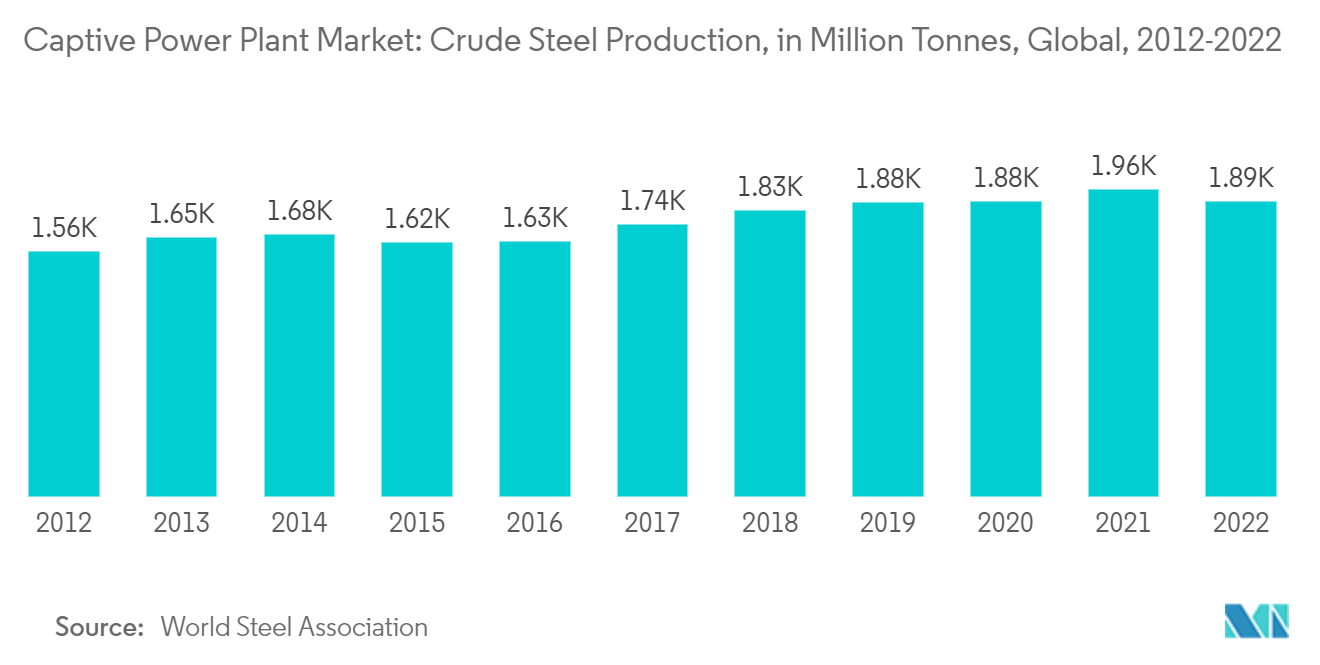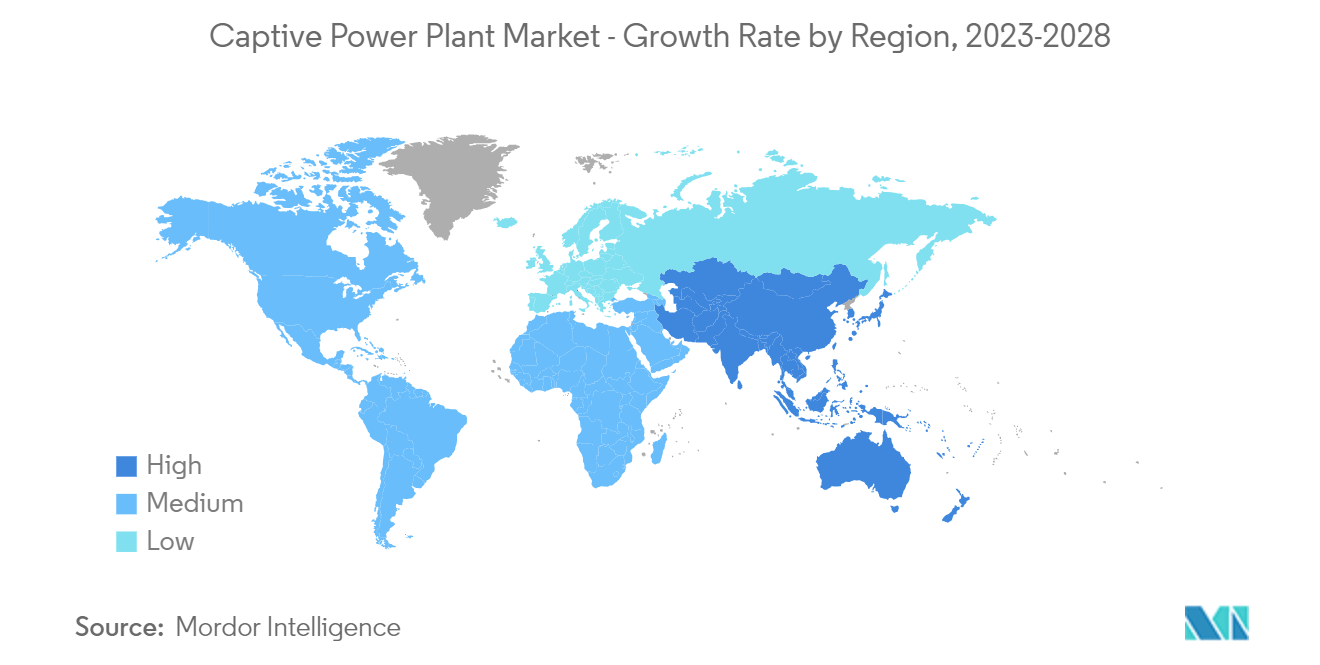Market Trends of Captive Power Plant Industry
Steel Industry to Have Significant Share in the Market
- It is very important to have a reliable power source when operating a large-scale steel plant. The distribution system for power in a steel plant is different from that of any other industrial plant because of the nature of the load and its magnitude. It is common knowledge that large-scale integrated steel plants consist of a variety of processing plants, nonprocessing plants, services, and utilities.
- Since steel plants are continuous process plants requiring high capital expenditure, power network design should be viewed from a criticality perspective to ensure that any eventuality such as grid power failure, power equipment failure and internal power system disturbances due to poor power quality is adequately addressed. A constraint in selection and sizing of equipment and accessories cannot result in a massive capital damage associated with financial loss as a result of lost production, resulting in huge capital damage.
- Further, a large portion of modern life is comprised of steel. Infrastructure, buildings, machinery, electrical equipment, automobiles, and various products, from cookware to furniture, require large amounts of iron and steel. It is estimated that the steel demand will increase by five times by 2050.
- The world has built an enormous capacity for iron and steel during its modernization process. According to World Steel Association, in 2022, the steel production was around 1,885 million tons (MT), with an increase of around 20.6% from 2012.
- As a result of various policy, indigenous manufacturing will be encouraged by widening the manufacturing base, sharing know-how, product development, and technological transfer through a multilateral collaboration process.
- For instance, in October 2022, AMNS India, an arm of ArcelorMittal, announced an investment of USD 7.62 billion in its Hazira steel plant in India. This investment is expected to increase the plant's capacity to 15 million tons, which is currently 9 million tons. Additionally, the investment will include the installation of new steel-making technologies, the setting up of new-age machinery, and the expansion of product offerings.
- In July 2022, Indonesia's Krakatau Steel and South Korea's POSCO Holdings agreed to invest USD 3.5 billion in expanding their steel production capacity in Indonesia. KRAKATAU POSCO's production capacity for upstream and downstream products will be increased to 10 million tonnes per year under the agreement. Starting in 2023, the expansion includes manufacturing automotive steel for electric vehicles.
- Considering the developments and investments in the steel and iron industry in the region, the demand for capative power plants is expected to witness significant growth during the forecast period.

Asia-Pacific to Dominate the Market
- Asia-Pacific is expected to dominat the captive power plant market in 2022, and is expected to continue its dominance in the coming years as well. Factors such as growing population, rapid urbanization, and industrialization are driving the power demand in the region, creating significant opportunities for capacity expansion.
- In terms of GDP, China is the second-largest economy in the world. In 2022, the country’s GDP grew by about 0.8%, reaching USD 17.96 trillion. The growth in the country is gradually diminishing as the aging population, manufacturing to services, and external to internal demand, and the economy is rebalancing from investment to consumption.
- China is expected to be one of the largest and fastest-growing markets for captive power plants, owing to the significant growth in its chemical, oil & gas, metals processing, and other sectors. Further, it is expected to continue to witness similar growth during the forecast period, as captive power plants play a crucial role in these industries.
- The iron and Steel industry is a significant market for captive power plants. According to World Steel Association, in 2022, the steel production in China was approximately 1,018 million tons, around 54% of the global steel production.
- Further, the petrochemical industry is a significant contributor to China's economy and a key field for supporting the high-quality development of the manufacturing sector. Recently, China is witnessing developments in the petrochemical sector. For instance, in March 2023, Aramco and joint venture partners Panjin Xincheng Industrial Group and NORINCO Group announced plans to start the construction of a significant integrated refinery and petrochemical complex in northeast China. The complex is going to have combination of a 300,000 barrels per day refinery and a petrochemical plant with an annual production capacity of 1.65 million tons of ethylene and 2 million metric tons of paraxylene. Construction is expected to start in the second quarter of 2023 after the project has secured administrative approvals. It is expected to be fully operational by 2026.
- South Korea is also investing in its petrochemical business which is anticipated to create a rising demand for captive power plants. In November 2022, Saudi Aramco announced investment plans for about USD 7 billion at a South Korean affiliate's factory in the port city of Ulsan to produce more high-value petrochemical products. According to the company, the Shaheen project is Saudi's biggest investment in the Asian nation to develop one of the world's largest refinery-integrated petrochemical steam crackers.
- Hence, with these trends from the steel, and petrochemical industries, the demand for captive power plants is anticipated to increase significantly during the forecast period.


